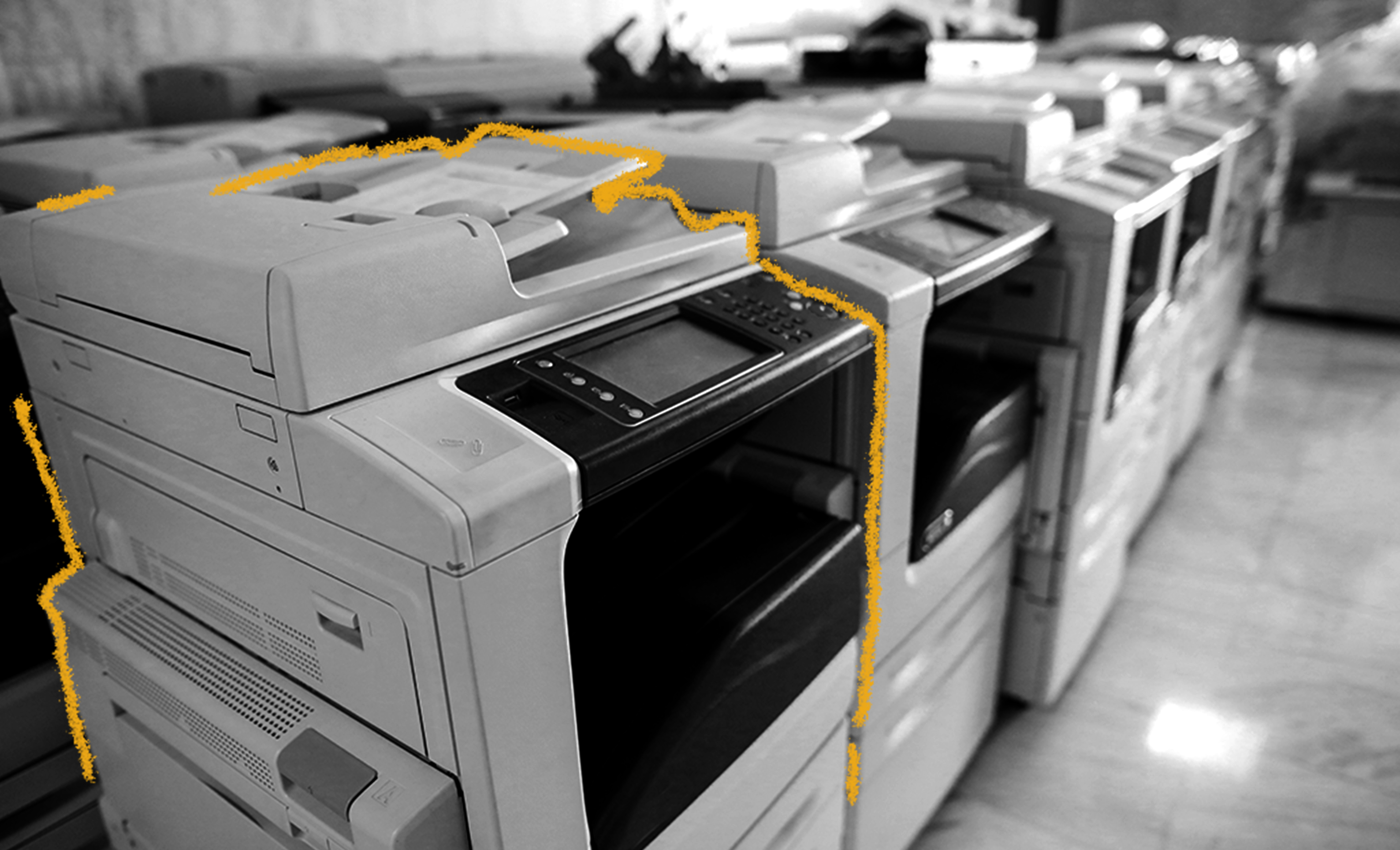A few centuries after Johann Gutenberg invented the printing press in the mid-1400s, the first true mechanical copier, the copying press, was invented in 1780 by James Watt, who also created the modern steam engine. Sometimes called a book press, it quickly became standard in offices and remained so for nearly a century and a half. In 1950, 3M created one of the first modern copying machines, the Thermo-Fax. Other manufacturers introduced their own attempts at copying machines, including the Dupliton, Dial- A-Matic Autostat, Verifax, Copease, and Copymation. However, they all had drawbacks, such as their use of chemically treated papers that tended to curl up and smell bad. Worse, most of them were hard to read. Every single one of these machines was made obsolete in 1959 when the Haloid Company (known today as the Xerox Corporation) introduced an office copier called the Haloid Xerox 914. Unlike its predecessors, the machine made sharp, permanent copies on regular paper. The machine used a newly invented process called xerography, which was conceived of by just one person — Chester Carlson, a quiet patent attorney who grew up in poverty and worked his way through junior college and then the California Institute of Technology. He discovered xerography in 1937 and was partly inspired by his struggles to copy long law passages at the New York Library for his night classes at New York Law School (he enrolled in 1936). In 1938, he rented a lab and employed a physicist named Otto Kornei to help him realize his vision of a copying method based on photoelectricity and photoconductivity. On October 22, 1938, the first xerographic copy was created. Kornei was unimpressed and left early on, but Carlson continued to refine the concept and even offered the technology to more than 20 major corporations, but they all turned him down. The Batelle Memorial Institute and the Haloid Company eventually took the idea on and in 1948, Carlson became a Haloid consultant, playing a key role and helping to maintain enthusiasm for the idea as engineers continued to refine the initially unsuccessful versions of the machine. Eventually, the 914 model was released and was quickly embraced. Nearly overnight, it became possible to make copies at a rate that was staggeringly higher than ever before. And that rate keeps growing even today! Notably, no one has come up with a better way to make copies on plain paper, and xerography remains a current (albeit much refined) technology despite its invention way back in the 1930s — an almost unheard-of feat in the fast-changing world of tech.

Your go-to guide for weird history facts
Subscribe to the FREE daily email that makes learning about history fun.


